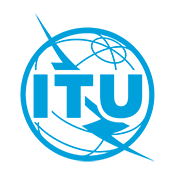The context
Co-rapporteur of ITU-T Q7/SG5: E-waste, circular economy and sustainable supply chain management. Research topics on distributed systems and digitalisation, considering networking and computing infrastructures, interested in sustainability, development, economics, decentralization, transparency, accountability, governance, and digital inclusion.
The challenges
Green procurement policies, which focus on purchasing durable information and communication technology (ICT) equipment and recycling e-waste, can help reduce emissions and resource extractions and influence the market by increasing demand and stimulating research and product development. More details in the "Accelerating Circular and Sustainable Public Procurement of ICT" workshop are available here.
How standardisation activities help face the challenges
This recommendation provides technical guidance to public sector organisations on improving their procurement practices to purchase more circular ICT goods and services. The Recommendation covers the purchase of ICT equipment such as personal computers, terminals, network equipment and servers, and imaging equipment, and recommends specific requirements in procurement to (1) minimise the generation of e-waste and its adverse effects, (2) Maximise the use of energy efficient equipment, (3) maximize the useful life of equipment, and (4) maximize recyclability. It also covers design for e-waste prevention and procurement recommendations which are relevant for the management choices of the e-waste hierarchy, as well as specific requirements and guidance on procurement to enhance the energy efficiency, reduce Green House Gas (GHG) emissions to mitigate climate change and reduce the emissions of hazardous substances in e-waste.
The Benefits
Purchasing durable ICT equipment and recycling e-waste helps reduce emissions and resource extraction. Furthermore, green procurement policies can influence the market by increasing demand and stimulating research and product development, thus leading to increased availability and better prices for these ICT products.
This Recommendation ITU-T L.1061 (in AAP approval process) focuses on the environmental pillar of sustainability in the public procurement of ICT products. Therefore, it aims to provide a set of circular procurement principles to achieve environmental goals for organisations in [ITU-T L.1420], the Connect 2030 in [ITU-T L.1031] for the ICT sector, and the planetary goals of the UNFCCC starting with the Paris Agreement.
Future plans
To facilitate the implementation of this recommendation/standard, The Circular and Sustainable Public Procurement Guide (to be published soon but ITU) provides practical guidance and help to ICT procurement planners and professionals to improve the circular and sustainable outcomes of their organization’s ICT buying decisions and to avoid adverse impacts on social and environmental systems. The guide was developed in parallel with this Recommendation. Three levels of circular and sustainable ICT procurement for getting started (or improving) the level of circular and sustainable ICT procurement are covered in the guide:
- Policy and strategy, including setting the guiding principles and goals and planning for circular and sustainable ICT procurement.
- Creating the conditions, covering the practical steps for capacity building, target setting, and enabling circular and sustainable ICT procurement.
- Procurement processes, providing methods, approaches, and application cases for circular and sustainable procurement of ICT on the ground.
While predominately aimed at national governments, the guide equally applies to other public buyers. The GovStack initiative developed the guide in collaboration with the Circular Electronics Partnership.

